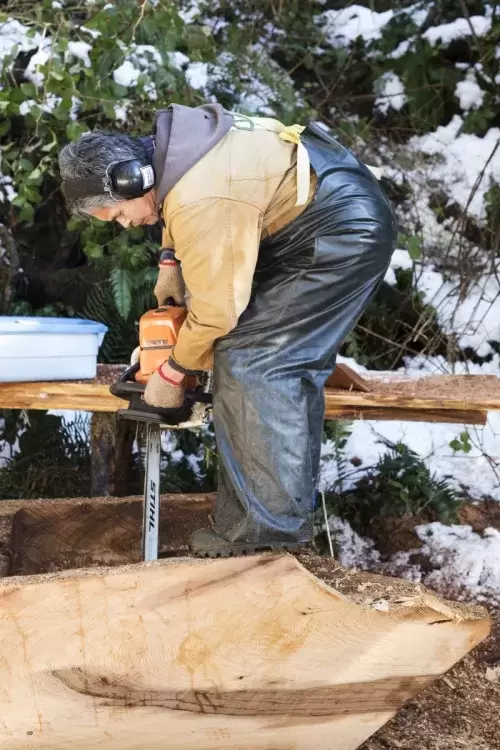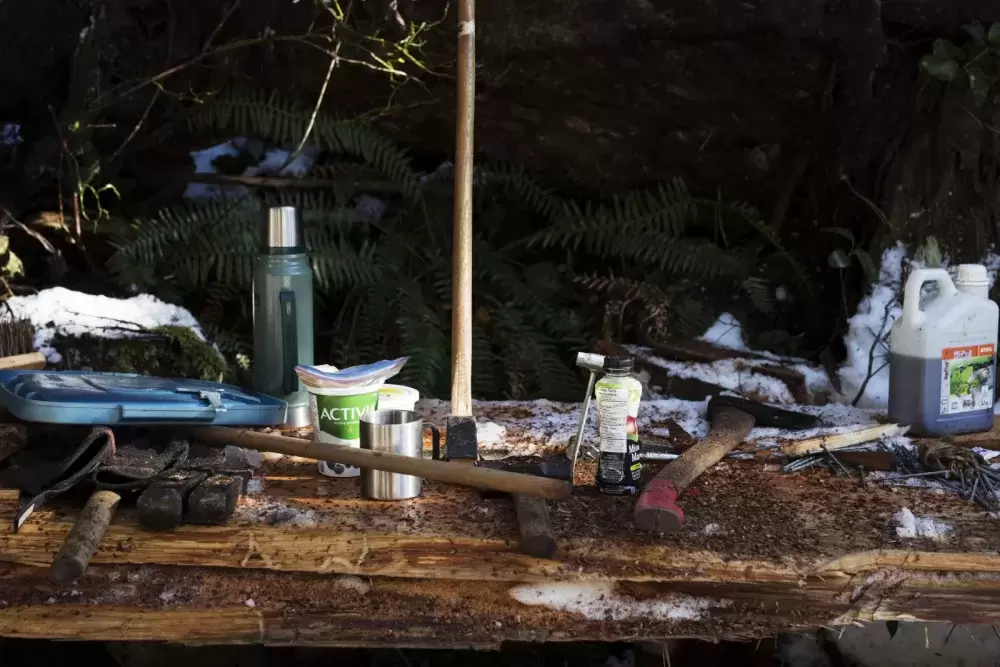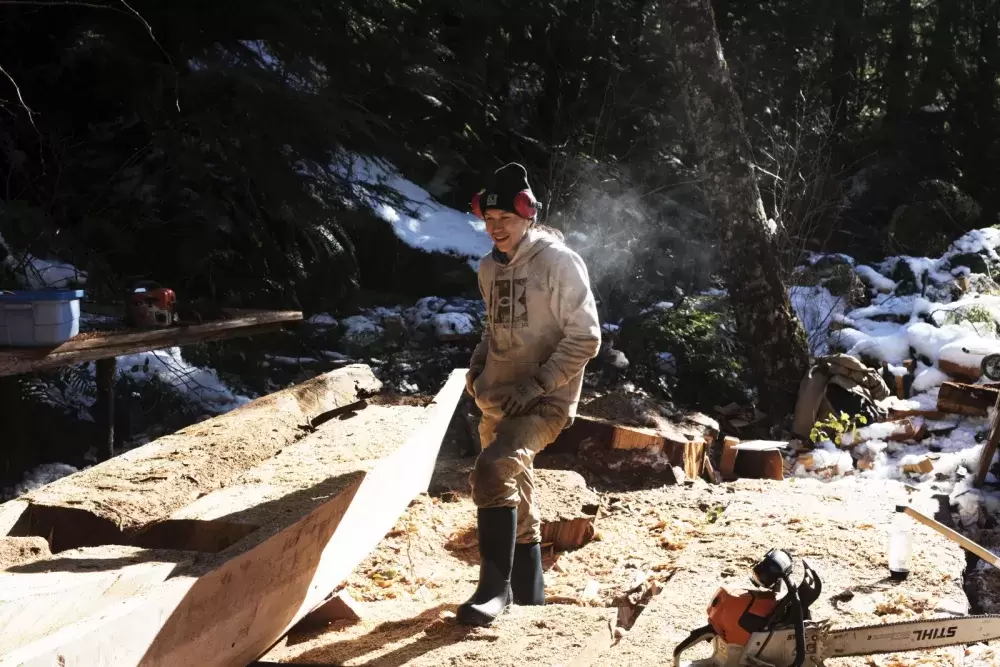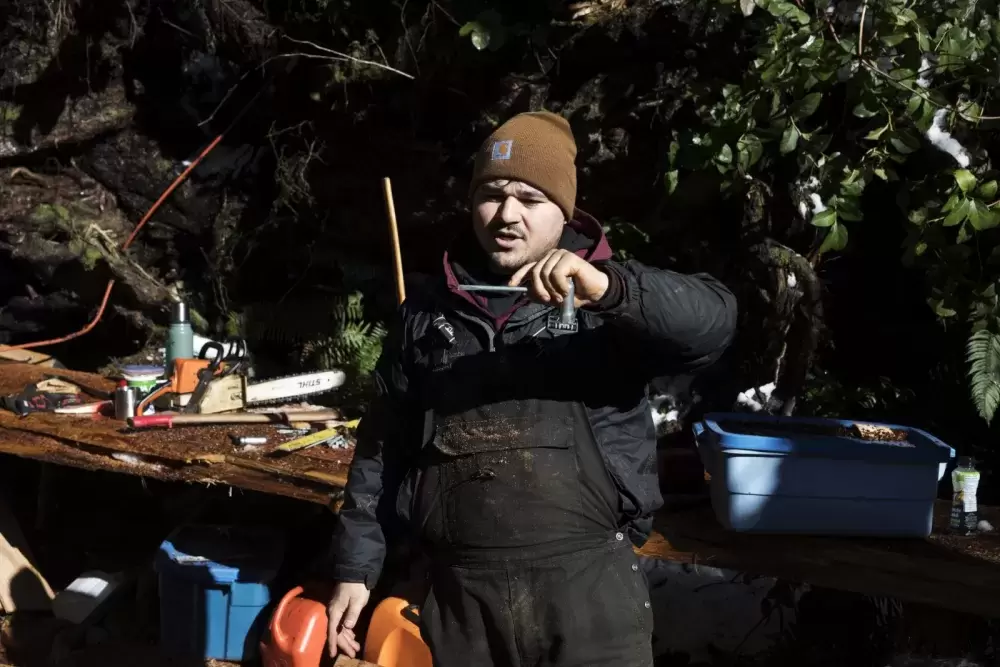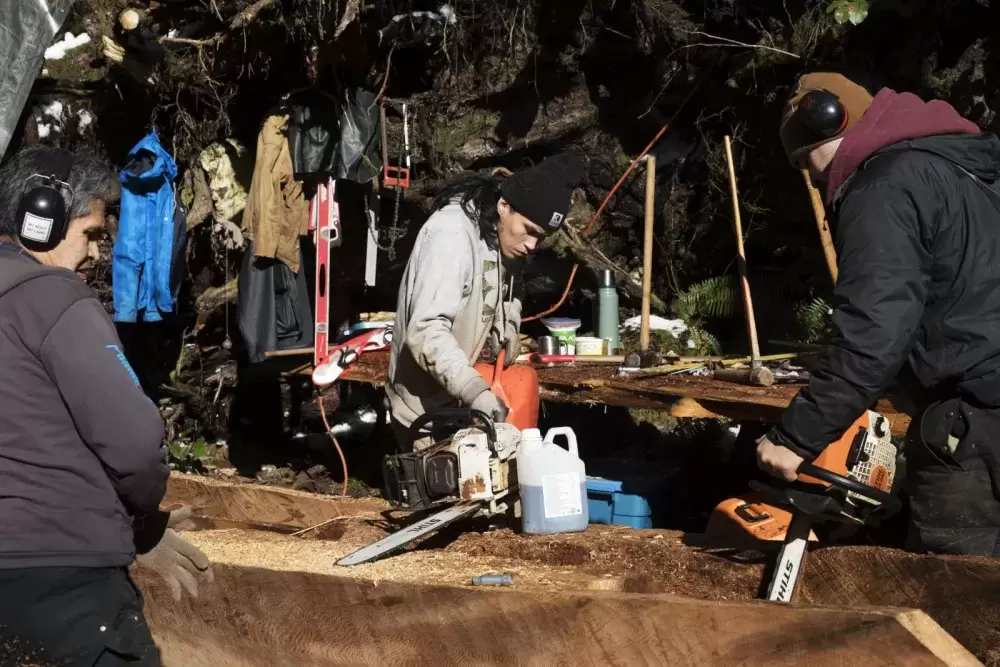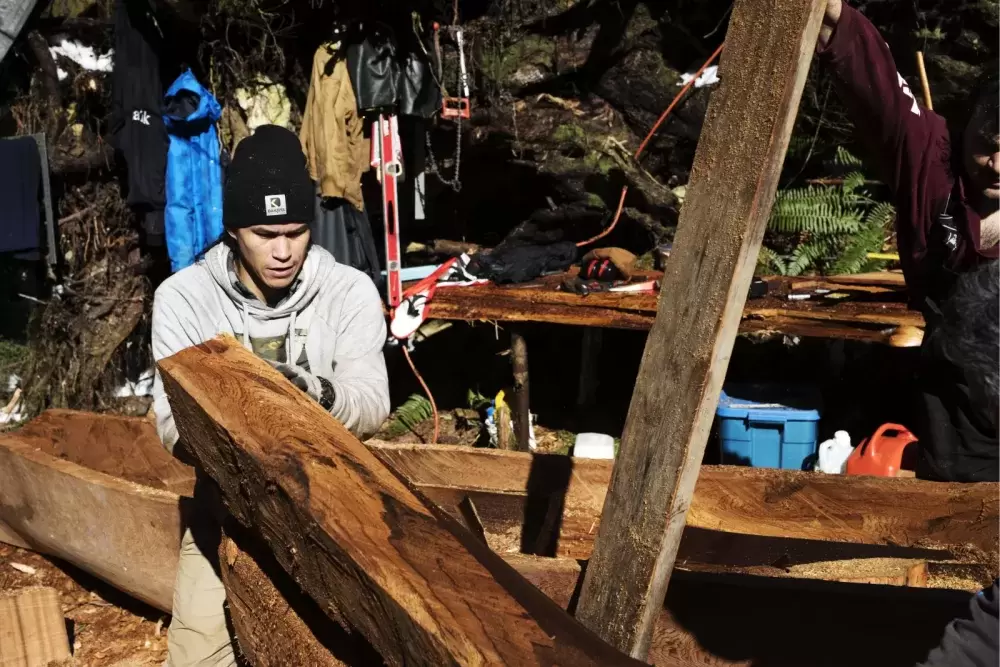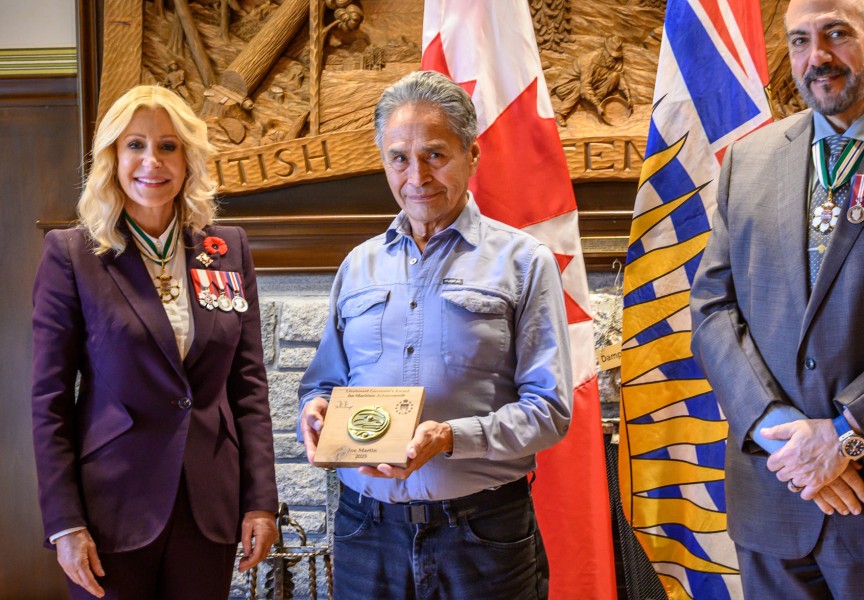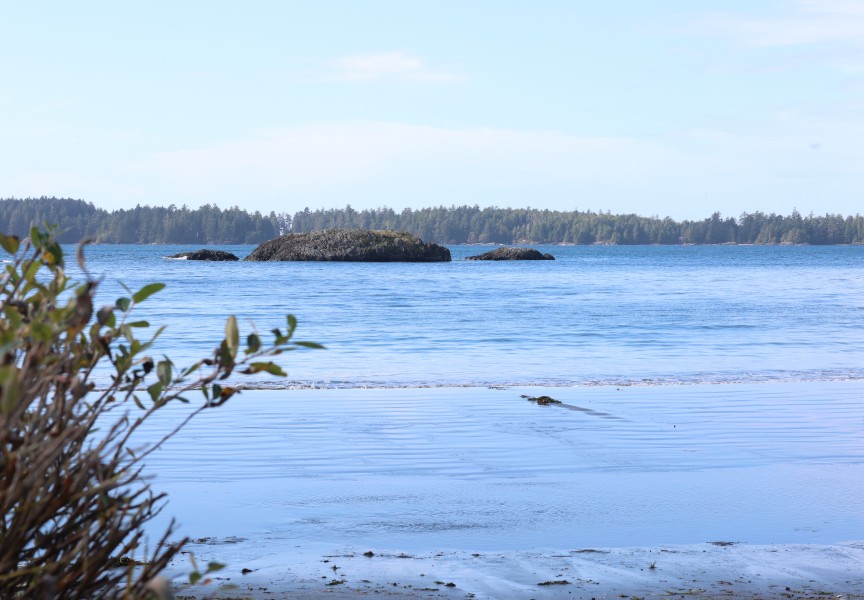When Valeen Jules performed spoken word poetry at the Koksilah Music Festival last year, the 24-year-old played ancestral Nuu-chah-nulth music in the background.
As the familiar melodies danced through Joe Martin’s ears, the master carver was lured to the stage and introduced himself to the young poet.
Like kindred spirits, they bonded immediately and Martin has been mentoring Jules as a wood carver ever since.
From paddles to bentwood boxes, the exposure led Jules to dream of carving a traditional dugout canoe that would allow family members to travel along the coast.
After securing grant funding from the Canada Council for the Arts and First Peoples’ Cultural Council, that dream is becoming a reality.
Jules decided to name the canoe, ʔaƛac̓u, which means two-spirit in Nuu chah-nulth. It is a nod to the youth’s queer identity.
“Our queer ancestors were powerful and had roles in whaling, in carving [and] in harvesting,” said Jules.
Rallying Ryan Sabbas and Joshua Watts to help, Martin is guiding the project forward.
“I had Ryan in mind since the beginning,” said Jules. “When I first started carving just over a year ago, I invited two or three peers to come learn as well. Ryan was the only one who showed up and was as equally excited to learn.”
Nestled in the forest off the Pacific Rim Highway, the team of carvers shaped the canoe, or chaputs, from a fallen red cedar tree.
In between chipping away at the hull of the canoe with a hunched spine, Sabbas let out a grown while gripping his lower back.
“The ancestors are mocking me,” he laughed, poking fun at his own fragility. “It is really hard work.”
Sabbas normally operates a water taxi in-and-out of his home in Hot Springs Cove. When he got the call from Jules to help with the project, he dropped everything for the opportunity to learn a tradition his own grandfather used to practice.
In his absence Sabbas’ father stepped in and said, “learn as much as you can, I’ll run the boat.”
While he misses being on the water, Sabbas said he enjoys carving canoes more.
“It’s really fulfilling,” he said. “It makes me feel really good.”
Encumbered by the distractions of digital technology, Sabbas said younger generations have become “lazier.”
“If a lot of our younger guys saw how rewarding it was, it would get them out more,” he said. “It’s hard to be distracted out here. I mean, look how far we’ve gotten in just a few hours – [the canoe] is already hollowing out.”
Watts joined the project with more experience, having previously worked on eight canoes - one of which he carved on his own.
He described the work as an “honour.”
“It’s really fulfilling knowing that our ancestors would be proud,” he said.
While he still considers himself a learner, Watts dreams of becoming a master.
“I’ll get there one day,” he said.
Having never carved a canoe in a forest, Watts said that Martin is teaching them how to use the environment to assist with the process.
From learning the traditional measurements of the stern and the bow in proportion to the hull, along with the use of depth plugs, Martin’s teachings have been “endless,” he said.
“The canoe is like a school,” said Watts. “It’s a link to our language and culture.”
Looking ahead, Jules, Sabbas and Watts all plan to continue carrying their ancestors’ knowledge forward by continuing to carve dugout canoes.
“I expect to see some more canoes on the water after this,” said Martin.


